Post by Purple Pain on Apr 24, 2024 10:48:27 GMT -6
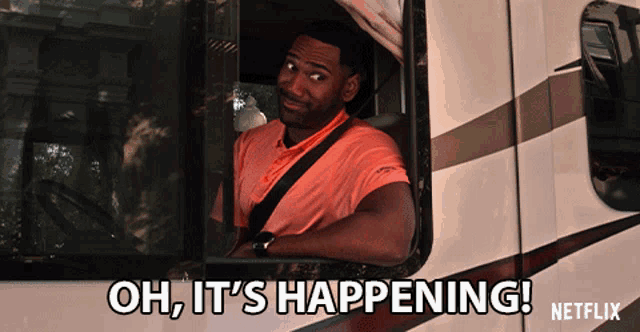
PFT: Kevin O'Connell has been "quarterback killer" as Vikings have searched for "the guy"
Basically, O'Connell explained that he's been resisting certain quarterbacks because he wants the next one to be the long-term answer.
"For a couple of years I've, you know, I've been kind of known as the ‘quarterback killer’ when it comes to the draft in Eagan, because the feeling that everybody that I feel from our fan base is when we get this next guy, he's gonna be the guy. And I feel it. I know you guys all feel it. So I have had to in a lot of ways fight off some mistakes from being made, mainly because the evaluation process I go through, I think about the things that are fixable.
"I think about the things that are coachable and then you think about the things that you could coach another 15 years with the player, and you might not be able to fix and hope and faith are wonderful things. I do like them to not necessarily be strategies. So I do very much believe in certain principles of playing the quarterback position. I believe the footwork in the lower half of any quarterback can be fixed with the proper coaching and teaching. And I think that when you see the good things on tape, you see things that they can do better on tape. You're looking for a lot of different things and to check a lot of boxes and ultimately when you feel like you find that guy then you got to hope that 31 other teams are complicit in making sure that they can become a Minnesota Viking, but we only need one team to be complicit and hopefully we find that team and that person's on it."
O'Connell then was asked about his connections to his original NFL team, the Patriots, who hold the third overall pick in the 2024 draft.
"You know, I may or may not have sent a nice bouquet of flowers to Robert Kraft the other day," O'Connell said.
It's going to take more than flowers to go from No. 11 to No. 3. The Vikings seem to be willing to do it for the right guy.
But here's the most important takeaway. O'Connell — the quarterback killer — won't just settle for whoever. He knows who he wants. We'll find out whether he gets him.
"For a couple of years I've, you know, I've been kind of known as the ‘quarterback killer’ when it comes to the draft in Eagan, because the feeling that everybody that I feel from our fan base is when we get this next guy, he's gonna be the guy. And I feel it. I know you guys all feel it. So I have had to in a lot of ways fight off some mistakes from being made, mainly because the evaluation process I go through, I think about the things that are fixable.
"I think about the things that are coachable and then you think about the things that you could coach another 15 years with the player, and you might not be able to fix and hope and faith are wonderful things. I do like them to not necessarily be strategies. So I do very much believe in certain principles of playing the quarterback position. I believe the footwork in the lower half of any quarterback can be fixed with the proper coaching and teaching. And I think that when you see the good things on tape, you see things that they can do better on tape. You're looking for a lot of different things and to check a lot of boxes and ultimately when you feel like you find that guy then you got to hope that 31 other teams are complicit in making sure that they can become a Minnesota Viking, but we only need one team to be complicit and hopefully we find that team and that person's on it."
O'Connell then was asked about his connections to his original NFL team, the Patriots, who hold the third overall pick in the 2024 draft.
"You know, I may or may not have sent a nice bouquet of flowers to Robert Kraft the other day," O'Connell said.
It's going to take more than flowers to go from No. 11 to No. 3. The Vikings seem to be willing to do it for the right guy.
But here's the most important takeaway. O'Connell — the quarterback killer — won't just settle for whoever. He knows who he wants. We'll find out whether he gets him.
Purple Insider: Young QBs are more prepared than ever for this moment
“I hated football after the whole thing. I was like, I’m done with it,” McCoy said. “I was depressed. People don’t talk about that enough. You go from playing in front of all of these people and suddenly boom, real life hits you. I shunned football, I didn’t want to be a part of it.”
But he couldn’t stay away for long. It was calling him. McCoy started coaching quarterbacks at Patrick Henry High School in 2014 and then Fridley High School from 2016-2018 and took a job at Champlin High in 2019.
Along the way he started working on the side training quarterbacks. He was doing sessions in the park with a co-worker’s son when the co-worker asked him, “how much do I owe you?”
“You don’t owe me anything,” McCoy told him.
“Yes I do, I pay the other guy,” the co-worker told him.
That night he couldn’t get it out of his head how much he enjoyed teaching quarterbacks the lessons he didn’t learn until it was too late — and the thought of getting paid for it was exciting. He decided to start his own business training QBs. He made a website, QBFootballTraining.com, wrote up a biography and decided this was his future.
For the last four years, that’s been McCoy’s focus. He has built his training into a full-time job working with numerous quarterbacks, a number of which have gone on to play college football and one who is hoping to be drafted or land a priority free agent gig this year.
McCoy picked the right time to start his QB training business. The industry has exploded in recent years as players try to get a head start on the competition.
McCoy starts with quarterbacks as young as eight or nine. Your first impression might be that it’s a little young to be talking fundamentals but it’s long been known in other sports like hockey that kids who don’t start skating until they are older have significantly reduced chances of being excellent hockey players. Football is no different. That doesn’t mean McCoy is treating them like Kirk Cousins, of course.
“In that early phase it’s understanding the mechanics of throwing,” McCoy said. “The upper body mechanic and then we break down the footwork component. I always say that you have to have good footwork to play quarterback. That is the foundation. Understanding where your hips need to be, sequence phasing and all that stuff… you don’t want to overwhelm an eight year old. You are teaching them the three-step drop, just the basics.”
He teaches basic coverages and concepts. During 7-on-7s he trains them to understand what “smash” and “hook-curl” means. How to run an RPO and hand the ball off correctly.
“The early preparation is key,” McCoy said. “If you want to be successful at this position, you have to get early tutelage even if it’s just learning the details early.”
The former pro QB said that he is not trying to create “football robots” and encourages kids to do things in ways that work for them but he uses an metaphor to explain what the lessons early for young quarterbacks can do for a player’s confidence:
“If you have crossed this bridge before then you can walk on this bridge and you know the different areas where you can step on the shaky bridge,” he said. “Having the experience and doing it over and over again allows it not to feel uncomfortable when you are out there performing.”
The other part that makes training outside of simply playing high school and college football an absolute necessity these days is that college coaches are more focused on winning than teaching fundamentals. That isn’t a knock, just the reality with limited hours and pressure to win. McCoy points out that Tim Tebow’s throwing motion might have been improved had it been a focus in college. Instead he was a one-read or run QB at Florida because Urban Meyer played to his strengths. When he got to the NFL he was too far behind.
Where McCoy’s story intersects with the Minnesota Vikings’ decision on Thursday night is that we have reached the point where every quarterback has worked with someone like McCoy during their journey to the first round of the NFL Draft. For example, former NFL Quarterback John Beck has worked with Jayden Daniels, JJ McCarthy and Michael Penix Jr. Bo Nix was trained by his dad growing up. Coach Rich Scangarello is working with Caleb Williams.
The pre-draft process alone requires these guys to be deeply knowledgeable about the game. Vikings head coach Kevin O’Connell explained at the owner’s meetings what it’s like for a prospect quarterback in individual meetings.
“You just turn on flip on the tape, give them the clicker and have them take you through it,” O’Connell said. “You can ask them questions in real time and see how fast they either remember things, how fast they're digesting the information or the question you're asking. How clearly and articulate can they put that information into real tangible things that then I can use as a coach for feedback to help them in the future. And then I think the value of them learning basically a foreign language in a lot of ways, our system, parts of our system that then you can then go on the grass and see if they understand how we want to set our feet and eyes on this drop or what kind of, when we talk about pocket movement, what that looks like when we talk about on schedule versus off schedule, red zone third down, like how it fits within the framework of… the system that we want to build for them.”
Private coaches aren’t exactly a new thing. There were several well known QB gurus in the industry for many years and QB camps have been increasing in popularity for some time. But now we have reached a point where quarterbacks who are reaching the NFL draft have been working from a very young age all year round on mastering the quarterback position. Every QB coming into this draft is more prepared from a young age than they ever would have been in the past.
“The kids that I’m training now, they are getting what I got later in life,” McCoy said. “By the time they get to high school, college, they are going to be ahead of the game…. It’s a different time.”
Quarterbacks have a lot to learn in the NFL no matter how many hours spent with private training but the players being picked in 2024 are arriving on the shores of the NFL with a professional mindset that was set within them for many years rather than having to grasp it on the fly as McCoy once did.
“There’s only one quarterback, what’s going to separate you?” McCoy said.
We will find out on Thursday night which quarterbacks separated themselves among all the others who wish to be in their shoes. And someday they will try to hold onto their spots as kids who are getting ahead of the game at a young age now come into the NFL even more prepared than they were.
But he couldn’t stay away for long. It was calling him. McCoy started coaching quarterbacks at Patrick Henry High School in 2014 and then Fridley High School from 2016-2018 and took a job at Champlin High in 2019.
Along the way he started working on the side training quarterbacks. He was doing sessions in the park with a co-worker’s son when the co-worker asked him, “how much do I owe you?”
“You don’t owe me anything,” McCoy told him.
“Yes I do, I pay the other guy,” the co-worker told him.
That night he couldn’t get it out of his head how much he enjoyed teaching quarterbacks the lessons he didn’t learn until it was too late — and the thought of getting paid for it was exciting. He decided to start his own business training QBs. He made a website, QBFootballTraining.com, wrote up a biography and decided this was his future.
For the last four years, that’s been McCoy’s focus. He has built his training into a full-time job working with numerous quarterbacks, a number of which have gone on to play college football and one who is hoping to be drafted or land a priority free agent gig this year.
McCoy picked the right time to start his QB training business. The industry has exploded in recent years as players try to get a head start on the competition.
McCoy starts with quarterbacks as young as eight or nine. Your first impression might be that it’s a little young to be talking fundamentals but it’s long been known in other sports like hockey that kids who don’t start skating until they are older have significantly reduced chances of being excellent hockey players. Football is no different. That doesn’t mean McCoy is treating them like Kirk Cousins, of course.
“In that early phase it’s understanding the mechanics of throwing,” McCoy said. “The upper body mechanic and then we break down the footwork component. I always say that you have to have good footwork to play quarterback. That is the foundation. Understanding where your hips need to be, sequence phasing and all that stuff… you don’t want to overwhelm an eight year old. You are teaching them the three-step drop, just the basics.”
He teaches basic coverages and concepts. During 7-on-7s he trains them to understand what “smash” and “hook-curl” means. How to run an RPO and hand the ball off correctly.
“The early preparation is key,” McCoy said. “If you want to be successful at this position, you have to get early tutelage even if it’s just learning the details early.”
The former pro QB said that he is not trying to create “football robots” and encourages kids to do things in ways that work for them but he uses an metaphor to explain what the lessons early for young quarterbacks can do for a player’s confidence:
“If you have crossed this bridge before then you can walk on this bridge and you know the different areas where you can step on the shaky bridge,” he said. “Having the experience and doing it over and over again allows it not to feel uncomfortable when you are out there performing.”
The other part that makes training outside of simply playing high school and college football an absolute necessity these days is that college coaches are more focused on winning than teaching fundamentals. That isn’t a knock, just the reality with limited hours and pressure to win. McCoy points out that Tim Tebow’s throwing motion might have been improved had it been a focus in college. Instead he was a one-read or run QB at Florida because Urban Meyer played to his strengths. When he got to the NFL he was too far behind.
Where McCoy’s story intersects with the Minnesota Vikings’ decision on Thursday night is that we have reached the point where every quarterback has worked with someone like McCoy during their journey to the first round of the NFL Draft. For example, former NFL Quarterback John Beck has worked with Jayden Daniels, JJ McCarthy and Michael Penix Jr. Bo Nix was trained by his dad growing up. Coach Rich Scangarello is working with Caleb Williams.
The pre-draft process alone requires these guys to be deeply knowledgeable about the game. Vikings head coach Kevin O’Connell explained at the owner’s meetings what it’s like for a prospect quarterback in individual meetings.
“You just turn on flip on the tape, give them the clicker and have them take you through it,” O’Connell said. “You can ask them questions in real time and see how fast they either remember things, how fast they're digesting the information or the question you're asking. How clearly and articulate can they put that information into real tangible things that then I can use as a coach for feedback to help them in the future. And then I think the value of them learning basically a foreign language in a lot of ways, our system, parts of our system that then you can then go on the grass and see if they understand how we want to set our feet and eyes on this drop or what kind of, when we talk about pocket movement, what that looks like when we talk about on schedule versus off schedule, red zone third down, like how it fits within the framework of… the system that we want to build for them.”
Private coaches aren’t exactly a new thing. There were several well known QB gurus in the industry for many years and QB camps have been increasing in popularity for some time. But now we have reached a point where quarterbacks who are reaching the NFL draft have been working from a very young age all year round on mastering the quarterback position. Every QB coming into this draft is more prepared from a young age than they ever would have been in the past.
“The kids that I’m training now, they are getting what I got later in life,” McCoy said. “By the time they get to high school, college, they are going to be ahead of the game…. It’s a different time.”
Quarterbacks have a lot to learn in the NFL no matter how many hours spent with private training but the players being picked in 2024 are arriving on the shores of the NFL with a professional mindset that was set within them for many years rather than having to grasp it on the fly as McCoy once did.
“There’s only one quarterback, what’s going to separate you?” McCoy said.
We will find out on Thursday night which quarterbacks separated themselves among all the others who wish to be in their shoes. And someday they will try to hold onto their spots as kids who are getting ahead of the game at a young age now come into the NFL even more prepared than they were.
Matt Fries: What Does Kevin O'Connell Mean When He Says QB Footwork Is Fixable?
We may have gotten one of the biggest nuggets of Minnesota Vikings draft information in an unexpected setting. Kevin O’Connell answered a football question from a fan while giving a talk that was primarily focused on faith at St. Philip the Deacon Church. In his answer, O’Connell opined on what he thinks is a fixable trait in a QB prospect, saying:
I believe the footwork and the lower half of any quarterback can be fixed with the proper coaching and teaching.
The snippet this quote came from can be seen in the tweet below, along with a link to the full video:
When unearthed, the quote predictably created a small frenzy. Desperate for any information on who the Vikings might take at QB, fans swarmed to guess who this quote might indicate the Vikings are interested in. It’s noteworthy that of the top QB prospects in the draft, Drake Maye and J.J. McCarthy are generally considered to have significant footwork issues that need to be fixed. Ted Nguyen interviewed private QB coaches with expertise in mechanics for this Athletic article, and he only mentions footwork for two — Maye and McCarthy. (For what it’s worth, the article also contains quotes suggesting the footwork issues are easy to fix.)
Footwork, which is a sub-category of QB mechanics, is often treated as a buzzword in draft analysis. Many scouting reports will identify mechanics as an issue for players that leads to inaccuracy and suggest it needs to be fixed. But if you’re a QB prospect, that doesn’t exactly help you figure out a way to improve your footwork. Proper identification of flaws and coaching can certainly help improve QB footwork, as shown by Ted’s Anthony Richardson profile before the draft last year. I’m far from a QB coach, but I wanted to go through my understanding of QB footwork and how it affects throws. Hopefully, it leaves you with a better understanding of how it impacts plays. I’m primarily going to use Kirk Cousins, one of the mechanically best QBs in the NFL, to show how it’s done.
I believe the footwork and the lower half of any quarterback can be fixed with the proper coaching and teaching.
The snippet this quote came from can be seen in the tweet below, along with a link to the full video:
When unearthed, the quote predictably created a small frenzy. Desperate for any information on who the Vikings might take at QB, fans swarmed to guess who this quote might indicate the Vikings are interested in. It’s noteworthy that of the top QB prospects in the draft, Drake Maye and J.J. McCarthy are generally considered to have significant footwork issues that need to be fixed. Ted Nguyen interviewed private QB coaches with expertise in mechanics for this Athletic article, and he only mentions footwork for two — Maye and McCarthy. (For what it’s worth, the article also contains quotes suggesting the footwork issues are easy to fix.)
Footwork, which is a sub-category of QB mechanics, is often treated as a buzzword in draft analysis. Many scouting reports will identify mechanics as an issue for players that leads to inaccuracy and suggest it needs to be fixed. But if you’re a QB prospect, that doesn’t exactly help you figure out a way to improve your footwork. Proper identification of flaws and coaching can certainly help improve QB footwork, as shown by Ted’s Anthony Richardson profile before the draft last year. I’m far from a QB coach, but I wanted to go through my understanding of QB footwork and how it affects throws. Hopefully, it leaves you with a better understanding of how it impacts plays. I’m primarily going to use Kirk Cousins, one of the mechanically best QBs in the NFL, to show how it’s done.
At the link:
DROPBACK FOOTWORK: DEPTH AND RHYTHM
TOP OF DROP: FEET ALIGNED WITH EYES AND POCKET MOVEMENT WITH INTENT
THROWING: LINED UP TO THROW AND FRONT FOOT POINTING AT THE TARGET
CONCLUSION
Can footwork be fixed in a QB? Kevin O’Connell certainly thinks so, and the issues highlighted above when comparing players to Kirk Cousins are certainly ones that can be resolved. Whether or not they actually get fixed is a different question.
Coaches usually do not pay this much attention to detail at the college level. The same is sometimes true in the NFL, where coaches are often more focused on mental preparation and installing plays than minute technical details. Quarterbacks have to take in a ton of information. However, few teams have coaching staffs with the level of quarterback-specific experience that the Vikings do.
The Vikings’ bet, should they draft a quarterback like Maye or McCarthy, is that they will be able to teach the players what they are doing wrong. Then, the players can receive coaching and work, likely outside of the team’s facility and structured practices, to shore up their footwork issues and become consistently accurate players.
Can footwork be fixed in a QB? Kevin O’Connell certainly thinks so, and the issues highlighted above when comparing players to Kirk Cousins are certainly ones that can be resolved. Whether or not they actually get fixed is a different question.
Coaches usually do not pay this much attention to detail at the college level. The same is sometimes true in the NFL, where coaches are often more focused on mental preparation and installing plays than minute technical details. Quarterbacks have to take in a ton of information. However, few teams have coaching staffs with the level of quarterback-specific experience that the Vikings do.
The Vikings’ bet, should they draft a quarterback like Maye or McCarthy, is that they will be able to teach the players what they are doing wrong. Then, the players can receive coaching and work, likely outside of the team’s facility and structured practices, to shore up their footwork issues and become consistently accurate players.
As always, great work from Fries. Hit the link above for more film study and analysis. ^^^














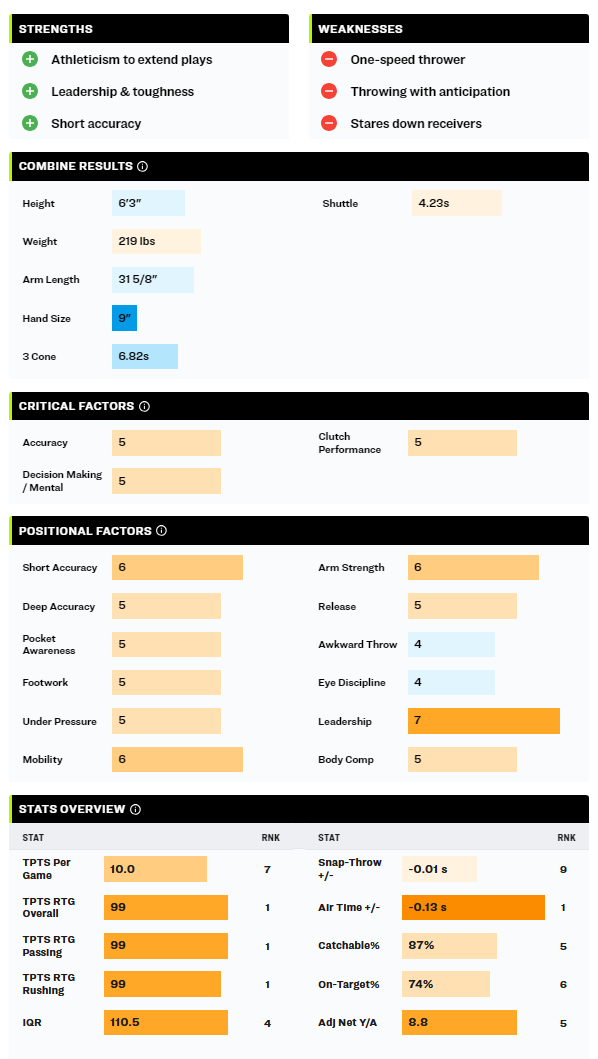
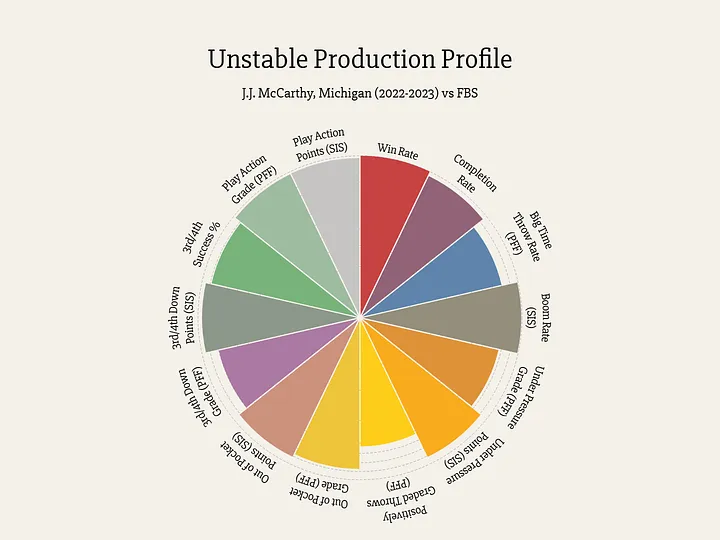
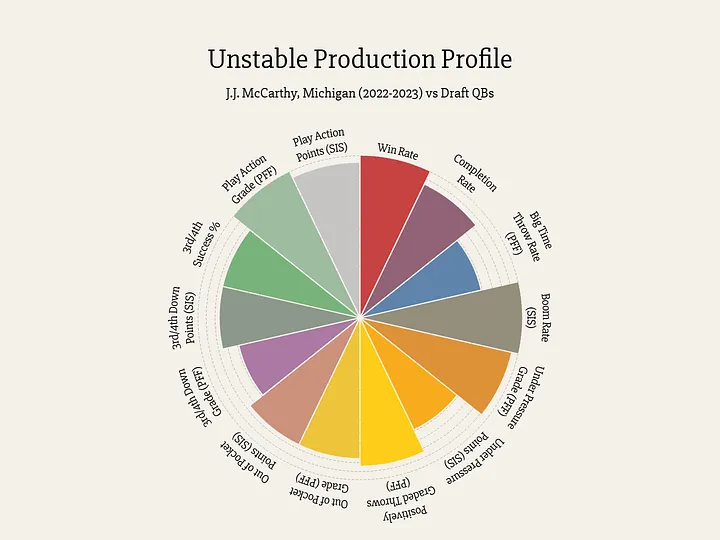
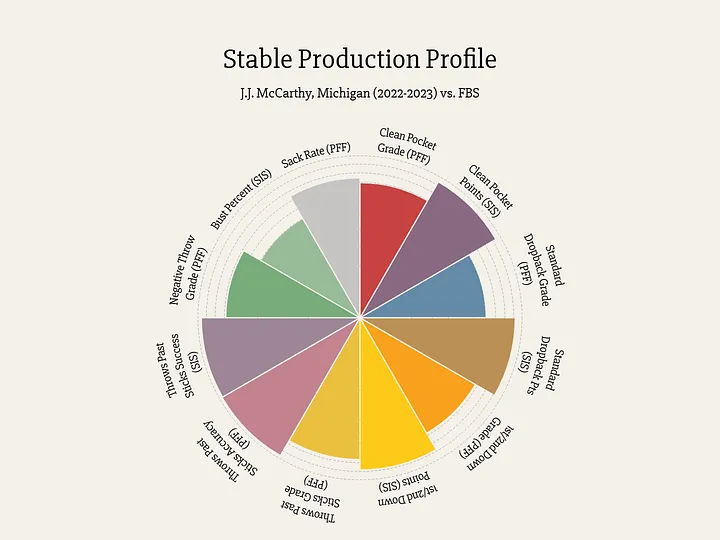
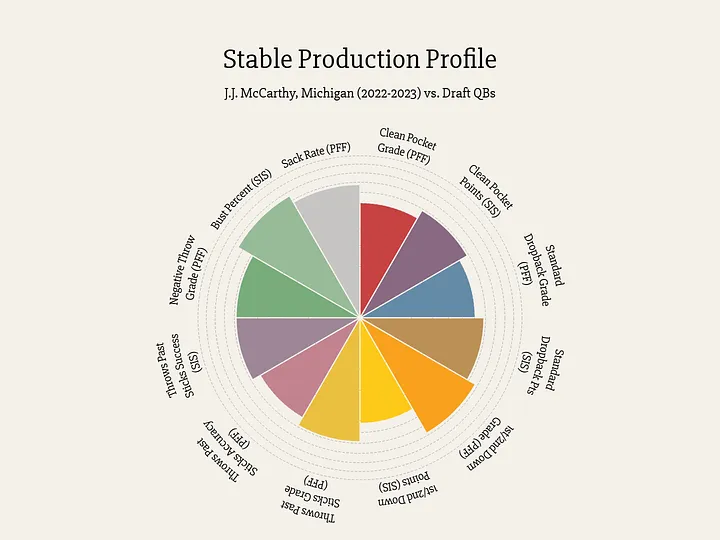

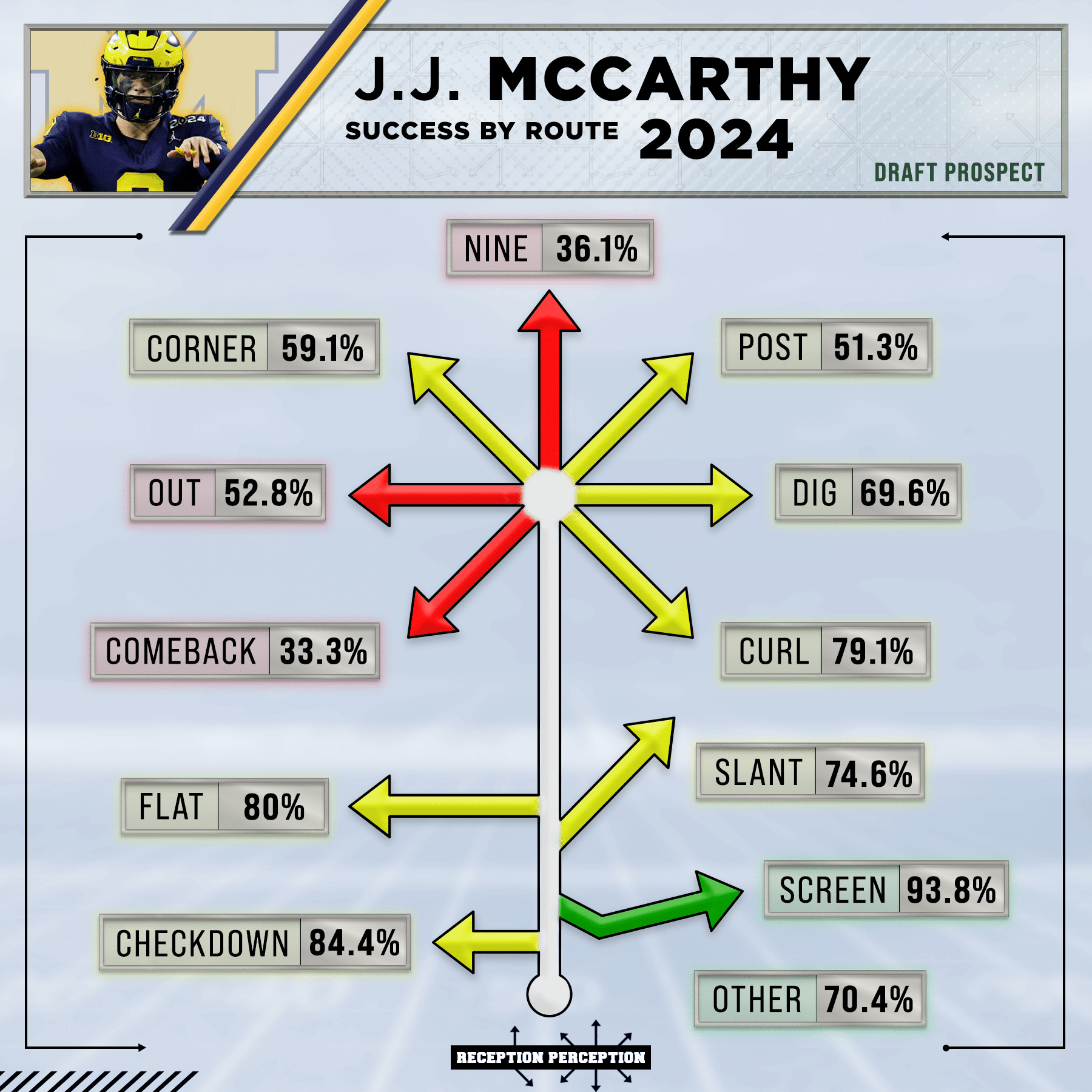


 Teddy had every chance to show everything he could be. He was mediocre before and mediocre after his horrible injury.
Teddy had every chance to show everything he could be. He was mediocre before and mediocre after his horrible injury.  Teddy had every chance to show everything he could be. He was mediocre before and mediocre after his horrible injury.
Teddy had every chance to show everything he could be. He was mediocre before and mediocre after his horrible injury. 


 ... and neither is this Chris guy.
... and neither is this Chris guy.